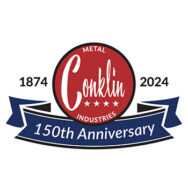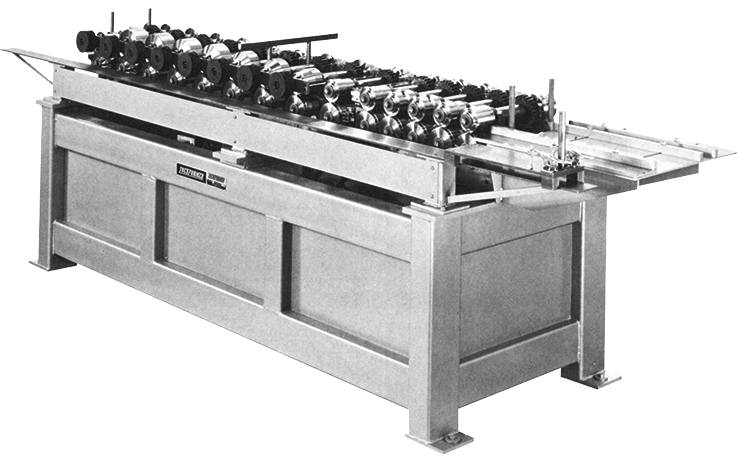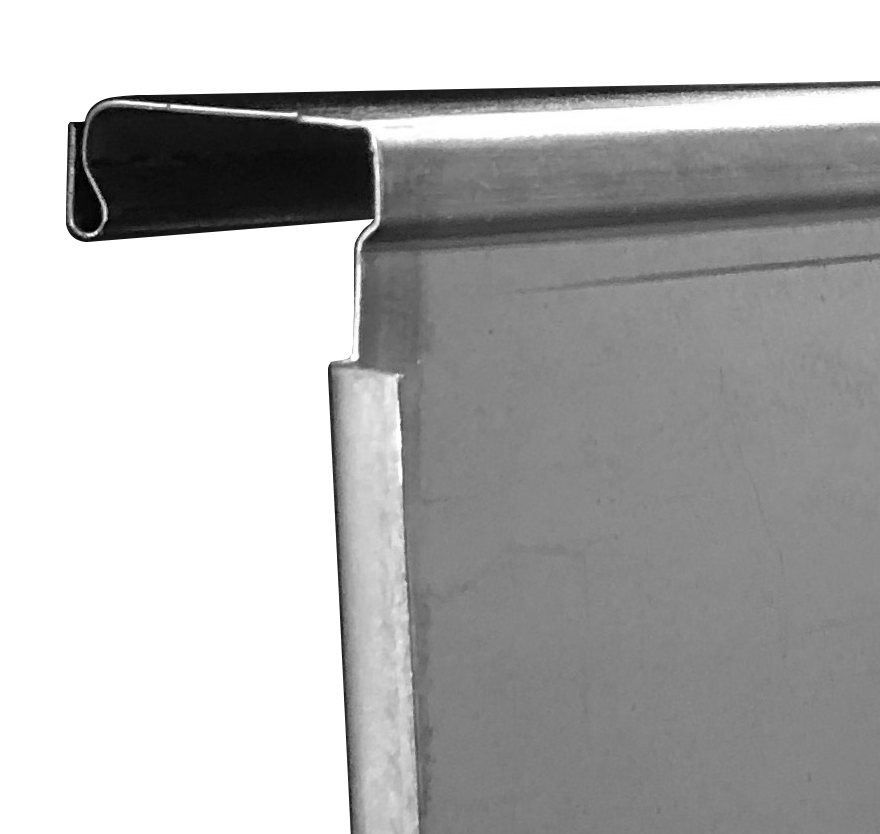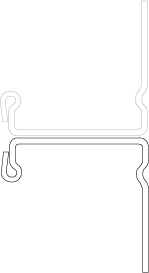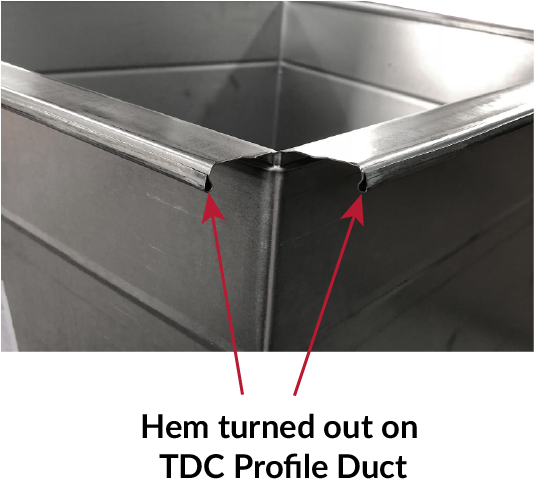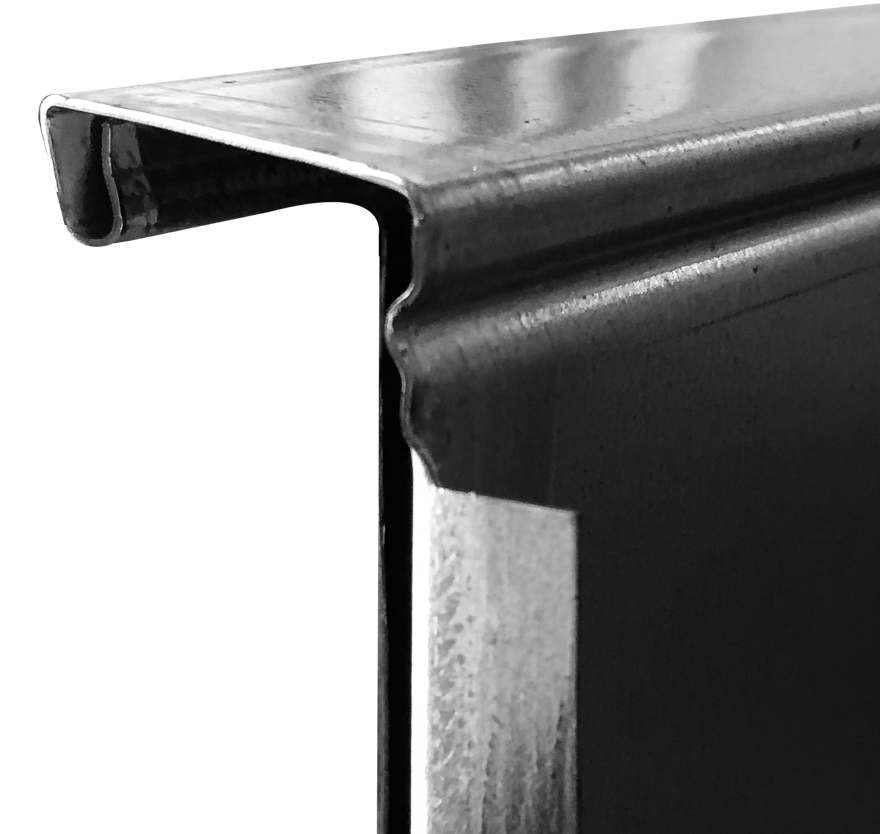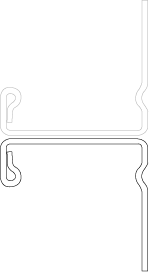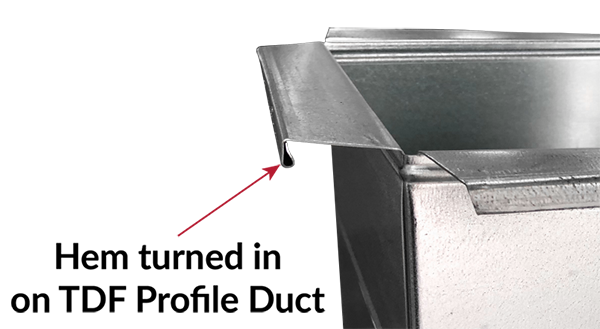TDC vs. TDF Profile
Lockformer’s TDC Machine (circa 1975)Smacna classifies any rolled on transverse connector as T25. Lockformer came out first with a TDC Rollformer (Transverse Duct Connector) and then Engel followed with their TDF Rollformer (Transverse Duct Flange). These machines rollform the Flange to the end of the Duct Joint, meaning that the Duct Wall and the Flange are one piece. TDC / TDF Duct is used in lieu of Ductmate Flange for the transverse connection (end to end) on medium and high pressure rectangular duct systems.
How to identify a TDC vs TDF profile:
TDC (T-25a)
- Mated TDC Profile
Differences between machinery requirements to roll each T25a (C) and T25b (F) profile:
12 stations are required to form the TDC profile; 16 stations required to form the TDF profile. TDC machine is available as 12 or 16 station. TDF machine is sold only as 16 station.
